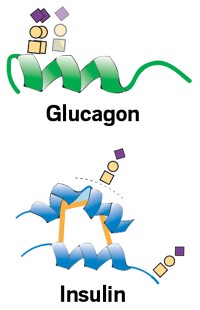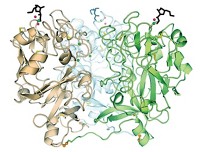Advertisement
Grab your lab coat. Let's get started
Welcome!
Welcome!
Create an account below to get 6 C&EN articles per month, receive newsletters and more - all free.
It seems this is your first time logging in online. Please enter the following information to continue.
As an ACS member you automatically get access to this site. All we need is few more details to create your reading experience.
Not you? Sign in with a different account.
Not you? Sign in with a different account.
ERROR 1
ERROR 1
ERROR 2
ERROR 2
ERROR 2
ERROR 2
ERROR 2
Password and Confirm password must match.
If you have an ACS member number, please enter it here so we can link this account to your membership. (optional)
ERROR 2
ACS values your privacy. By submitting your information, you are gaining access to C&EN and subscribing to our weekly newsletter. We use the information you provide to make your reading experience better, and we will never sell your data to third party members.
Analytical Chemistry
Mass Tags Quantify Glycosylation
Researchers have found a way to determine the stoichiometry of O-GlcNAc glycosylation in proteins
by Celia Henry Arnaud
August 2, 2010
| A version of this story appeared in
Volume 88, Issue 31
Researchers using a new mass-tagging strategy have found a way to quantify the stoichiometry of O-GlcNAc glycosylation in proteins (Nat. Chem. Biol., DOI: 10.1038/nchembio.412). In this type of posttranslational modification, which plays a role in many biological processes, the sugar N-acetyl-D-glucosamine is added to serine or threonine residues. Because the modification is labile and occurs at low levels, it has been difficult to quantify. Linda C. Hsieh-Wilson of California Institute of Technology and coworkers at Caltech and UCLA developed a gel-based approach using polyethylene glycol mass tags that they attach to proteins through a chemoenzymatic labeling method. When the proteins are separated by gel electrophoresis and visualized via fluorescently labeled antibodies, shifts in the protein bands reveal whether a protein has been singly, doubly, or more heavily glycosylated. For example, the researchers found that cyclic AMP-response element-binding protein exists as a mixture of mono- and diglycosylated forms in rat neurons. In addition, they determined the interplay of glycosylation and phosphorylation in the transcription repressor MeCP2. The team discovered that glycosylation is induced to a greater extent in phosphorylated MeCP2.




Join the conversation
Contact the reporter
Submit a Letter to the Editor for publication
Engage with us on Twitter